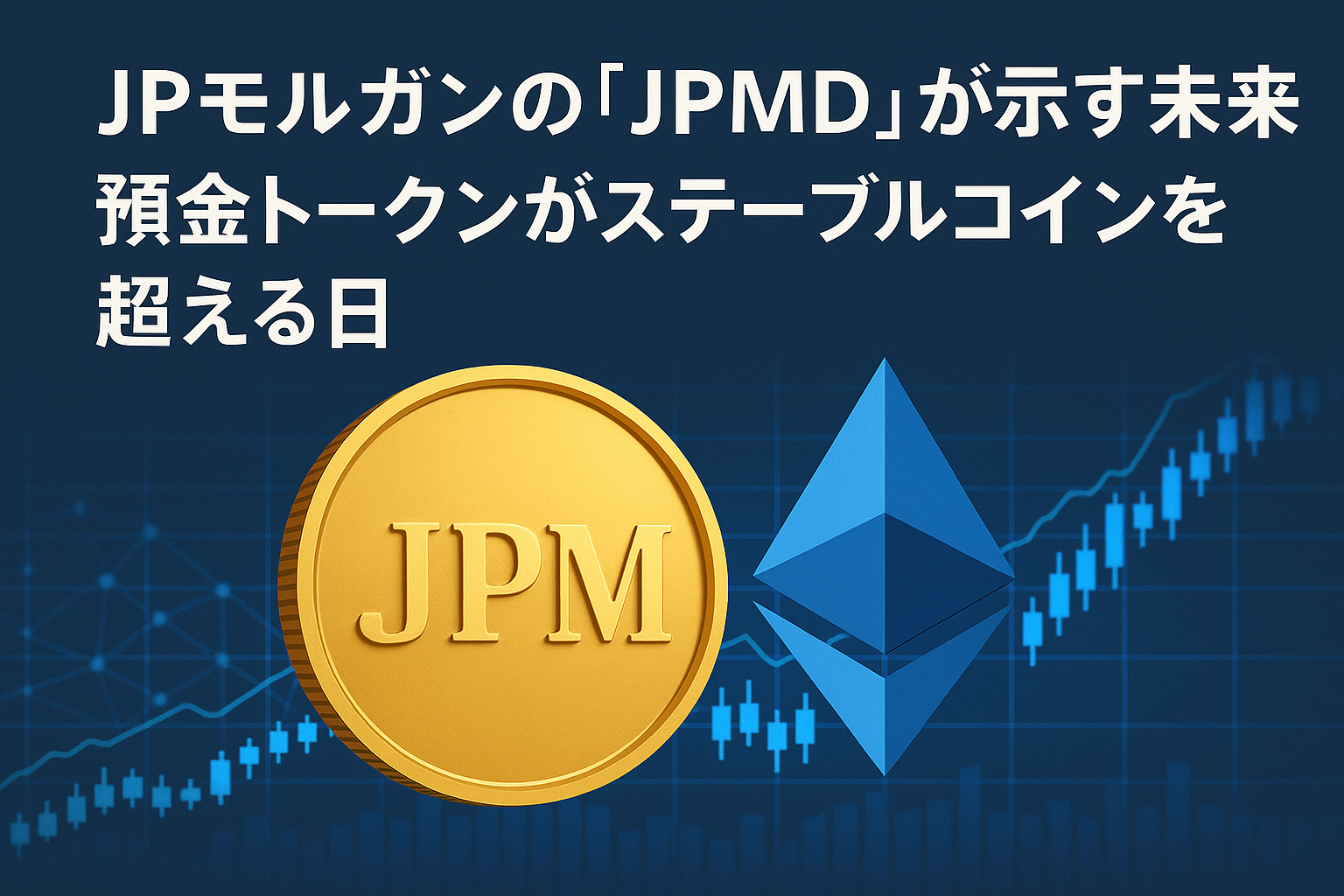The Accelerating Convergence of Traditional Finance and Digital Assets
In June 2025, news broke that JPMorgan Chase had begun a trial of its new deposit token, “JPMD,” sending shockwaves through both the crypto and traditional financial sectors. The token operates on Base, an Ethereum Layer 2 network, and is expected to begin circulating via Coinbase.
While still in its trial phase, this marks a major step in the full-scale adoption of blockchain and token technology by one of the world’s largest banks. What’s particularly noteworthy is the use of a deposit token — a form distinct from conventional stablecoins — that hints at a new dimension of financial innovation.
Deposit Tokens vs. Stablecoins: A Redefinition of Structure and Trust
Deposit tokens are issued by tokenizing customers’ bank deposits directly, and are managed within the traditional banking infrastructure. In contrast, stablecoins such as USDC or USDT are backed by reserves like cash or Treasury bonds and are issued by non-bank entities.
This distinction is critical for institutional investors. As JPMorgan’s Naveen Mallela notes, deposit tokens can support fractional reserve models and potentially offer interest payments within regulatory frameworks — making them far more compatible with existing banking operations. In essence, they promise a blend of trusted security and yield-generating potential.
JPMorgan and Base: Why Layer 2?
Of particular interest is JPMD’s operation on Base, an Ethereum Layer 2 network launched by Coinbase in 2023. Base now holds the largest market share among L2 solutions. JPMorgan’s choice reflects technical advantages like scalability, lower costs, and seamless integration with traditional financial systems.
This is not merely an experiment with a new financial product — it is a strategic move aimed at replacing core financial infrastructure.
Impact on the Industry and Future Outlook
The emergence of JPMD may ripple through the financial industry in the following three ways:
- Competition with Non-Bank Stablecoins
As concerns grow among banking lobbyists, the entry of financial giants like JPMorgan into DeFi and the token economy via deposit tokens represents formidable competition to non-bank stablecoins.
- Regulatory Realignment
Since deposit tokens fall within the legal scope of bank deposits, they require a different regulatory approach than traditional crypto assets. This could influence the direction of future digital currency policies.
- Rise of Yield-Bearing Tokens
If JPMD begins offering interest, investors may see it as a new asset class combining safety with returns — potentially redefining what a stablecoin can be.
Reconstruction or Integration of Traditional Finance?
JPMorgan’s latest move is not just an expansion into crypto; it signals the adoption of blockchain as an extension of the traditional financial system. If bank-issued digital tokens become mainstream, it could accelerate both competition and convergence with CBDCs and DeFi platforms.
The trial of JPMD marks the beginning of a new era, where blockchain technology is poised to become mainstream financial infrastructure.

